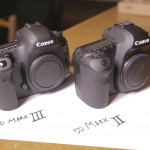14 Jan The Possibilities of Portrait Lighting – by the Perez Brothers
Uncategorized | Studio B TeamCinematography is infinite in its possibilities… much more so than music or language. – Conrad Hall
The above quote by Hall (cinematographer of Butch Cassidy and the Sundance Kid, American Beauty, etc.) helps to illustrate the collaborative decisions a cinematographer and gaffer must make when it comes to lighting an actor. Whether you are filming a commercial in Silicon Valley or narrative feature, it is essential to have firm grasp of how lighting can affect the audience’s perception of your subject. The following clip from a music video produced for Heia Sun & Stellar Kinematics demonstrates how a single light source can dramatically change one’s perception of the human face:
As seen from the hypnotizing example above, light placement is everything. Placing a light below an actor’s eye-line for example, can offer an ominous or menacing look (imagine a film noir or a horror film). Conversely, placing a light above an actor’s eye-line provides a more natural and potentially beautiful aesthetic (imagine a high-key comedy or commercial). Whatever the cinematographer’s creative preference might be, as a gaffer, I am often asked to light actors in a portrait setting.
While every actor’s face is unique and every project requires a different approach, I have found myself continually returning to one streamlined lighting plan for my portraits. Several years ago I had the pleasure of working with the McCoubrey Brothers on a series of NFL spots for their Thursday Night Football campaign. With limited production gear available, we devised an effective portrait lighting set up for the Oakland Raiders and San Francisco 49ers. The following is a simplified sketch of the lighting setup we used for the shoot (created by Devon Perez):
Pretty easy right? All that you need for the above lighting plan is three lamps: a key light (one 1K Arri with a Chimera), and two soft backlights (two 2×4 Kino Flos with tungsten bulbs). At the time of the production, I could not quite put my finger on why the setup made the players look so fierce. In retrospect, I realized that the intensity of the portraits came from the way the softback lights accentuated the jawlines of the athletes.
Jawlines are extremely important for both male and female subjects. Accentuating a jawline with lighting can help actors appear to have model-esque cheekbones, while simultaneously make an action hero look twice as sculpted. The following still shot was taken from an upcoming short film that I directed with my brother Devon, entitled The Weigh In (2014):
As you can see from the example above (which uses the same lighting setup illustrated in the diagram), the jawline is accentuated and there is a lot of contrast on the face, which provides “tough” looking portrait of our boxing character. Conversely, the portrait lighting plan can be modified to achieve a more natural looking aesthetic for your film. The following still was taken from an internal video for Google that I shot and lit with my brother:
As you can see from the example above (using the same lighting setup), we were able to achieve a totally different look, yet maintain a strong jawline on our subject. As mentioned previously, the portrait lighting plan can be modified to taste by adding an additional hard backlight or a fill light. For corporate shoots, I will often bring the key light directly over camera (which provides a nice even spread on the face) and compliment the key with an additional fill light or a piece of reflective beadboard.
In conclusion, there is no magic potion or simple formula for lighting every subject. Some portraits are lit with a single source, while others are lit with countless lamps, as Hall said, “the possibilities are infinite.” However, my hope is that the above article and visual examples can help provide a jumping off point for making portrait decisions on your next project. As I my brother and I continue to make films, we have found it crucial to never stop learning and to continually find ways to push yourself both technically and creativity. Informed lighting can lead to fantastic projects, never settle for less.
The Perez Brothers are award winning filmmakers and lighting technicians from the San Francisco Bay Area. They are best known for their work as co-directors on music video and narrative shorts. As they continue their search for representation, their style has often been described as comedic, surreal, and always creative. @PerezBros


























